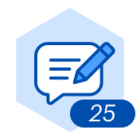Happy Wednesday, Lucid community!
If you've ever hosted a large team session, you probably know the feeling of excitement quickly turning into a scramble. Sticky notes pile up, voices get lost, and then the initial energy dissipates. It's frustrating and inefficient.
Enter breakout boards.
This fantastic capability lets you leverage the power of smaller groups to drive greater alignment and engagement. And who doesn’t love that?
Essentially, breakout boards are private rooms within your main canvas. They allow you to instantly compartmentalize content and divide your large group into focused teams, giving every participant a voice.
In a nutshell, breakout boards can help you:
- Turn chaos into clarity: Say goodbye to endless scrolling. Use the main board for your high-level overview and dedicate breakout boards to specific tasks, such as research, brainstorming, or analysis.
- Keep a running record: For recurring meetings (like sprints or standups), simply dedicate a new, dated breakout board to each session. Your main canvas stays tidy, and you instantly create an organized archive of decisions and progress.
- Maximize engagement: Facilitating a large workshop? Breakout boards ensure active participation by giving everyone a smaller, less intimidating space to contribute their ideas.
What’s more, you can create up to 50 breakout boards from a single Lucidspark canvas.
If your team struggles with meeting overload or disorganized content, it’s time to try this feature. It's the simplest way to move from feeling overwhelmed to laser-focused efficiency.
I’m curious, what have you used breakout boards for? And, if you need some more inspiration, check out my recent article on breakout board use cases. 📌

